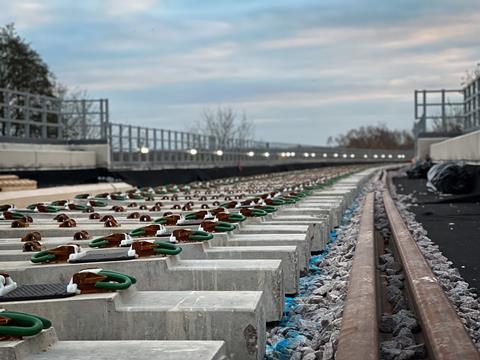The project to link up the Oxford-Cambridge Arc was on the list that chancellor Jeremy Hunt pledged to back in last month’s autumn statement. As EWR Co begins to put its team together for phase two, Daniel Gayne examines the whats, whys, whos and hows of the scheme
Last month’s autumn statement was greeted with a sigh of relief by many across the construction sector, as major infrastructure projects were spared the axe.
Instead, chancellor Jeremy Hunt recommitted to building energy supply as well as headline rail investments including HS2, Northern Powerhouse Rail and East West Rail (EWR).
The latter of these has received less fanfare and attention than its larger siblings, but bosses at EWR Co, the arms-length company responsible for delivering the project, have wasted no time in progressing the scheme. A technical partner for its next phase has been appointed barely a month after Hunt’s statement.
What is East West Rail and why is it being built?
The main purpose of East West Rail is to improve connectivity across the Oxford-Cambridge Arc, an area between the two university cities that includes Bedford, Milton Keynes, Bletchley and Bicester (see map below)

The region is home to leading universities and life sciences and manufacturing firms, but poor connectivity has limited it in parts, with 14 areas across Oxford, Milton Keynes and Bedford numbering among the 10% most deprived in England.
Existing infrastructure along one 16-mile stretch of the planned route allows just one train an hour and takes 42 minutes. The whole scheme is expected to cost between £5bn and £8bn.

How will it be built?
Services will be introduced in three phases, the first being built between Oxford and Milton Keynes, the second between Bletchley and Bedford and the last from Bedford to Cambridge. The majority of the route consists of upgrading existing infrastructure and rebuilding the old Varsity Line, which linked the two university cities until 1968. Only the final stage will follow a completely new route.
The first stretch of the line, up to Bicester Village, has already been completed and services are underway, although further work will be required to run the four trains per hour planned for the full East West Rail service.
The rest of phase one, which involves the reconstruction of the old Varsity Line and a new station at Winslow, is currently being built, having secured £760m in government funding in January 2021.
Stage two involves upgrading existing infrastructure between Bletchley and Bedford, allowing services between Oxford and Bedford, while the third stage of the route will link Bedford to Cambridge, via Sandy/Neots and Cambourne, both of which will get new stations.
Who is working on it?
The first stretch of stage one, up to Bicester Village, was completed in 2016 by a consortium of Network Rail, Chiltern Railways, Carillion and Buckingham Group, after which the government set up EWR Co to deliver the rest of the project.
Set up in 2018, the company is currently being run by Beth West – former managing director of Balfour Beatty’s southern arm – who took over from Simon Blanchflower as its chief executive In March 2022.
The portion of phase one currently under construction is being built by the East West Rail Alliance, a consortium of Network Rail, Atkins, Laing O’Rourke and Volker Rail.
In September 2021 Arcadis was appointed as the commercial partner to work with supply chain partners RLB and KPMG to develop the business case and submit the application for a Development Consent Order (DCO) for the next phase. On Tuesday, a joint venture between Mott MacDonald and WSP was named as the technical partner for the next phase of the scheme, providing input on the DCO submission.

What next for the project?
The project is in the process of refreshing its business case and delivery programme after the Infrastructure Projects Authority gave stages two and three a “red status” in July, indicating that “successful delivery of the project appears to be unachievable”.
EWR Co’s West had said in advance of the autumn statement that it would be looking to make a final route announcement for the third stage “as soon as we can” after being given the green light.
>> See also: Network Rail worries inflation will eat into £44bn investment plan
>> See also: Autumn statement: at-a-glance
>> Simon Rawlinson: Chancellor’s statement leaves me with a shrinking feeling
“Because we’ve been in a bit of a zone of the unknown for about the past year, we’ve tried not to spend shed loads of money and tried to get ahead of things,” she told an Institute of Government and Public Policy summit.
The project aims to have trains running between Oxford and Milton Keynes by 2025 and West said it was looking to go into operation across the full route in the early 2030s.



























No comments yet